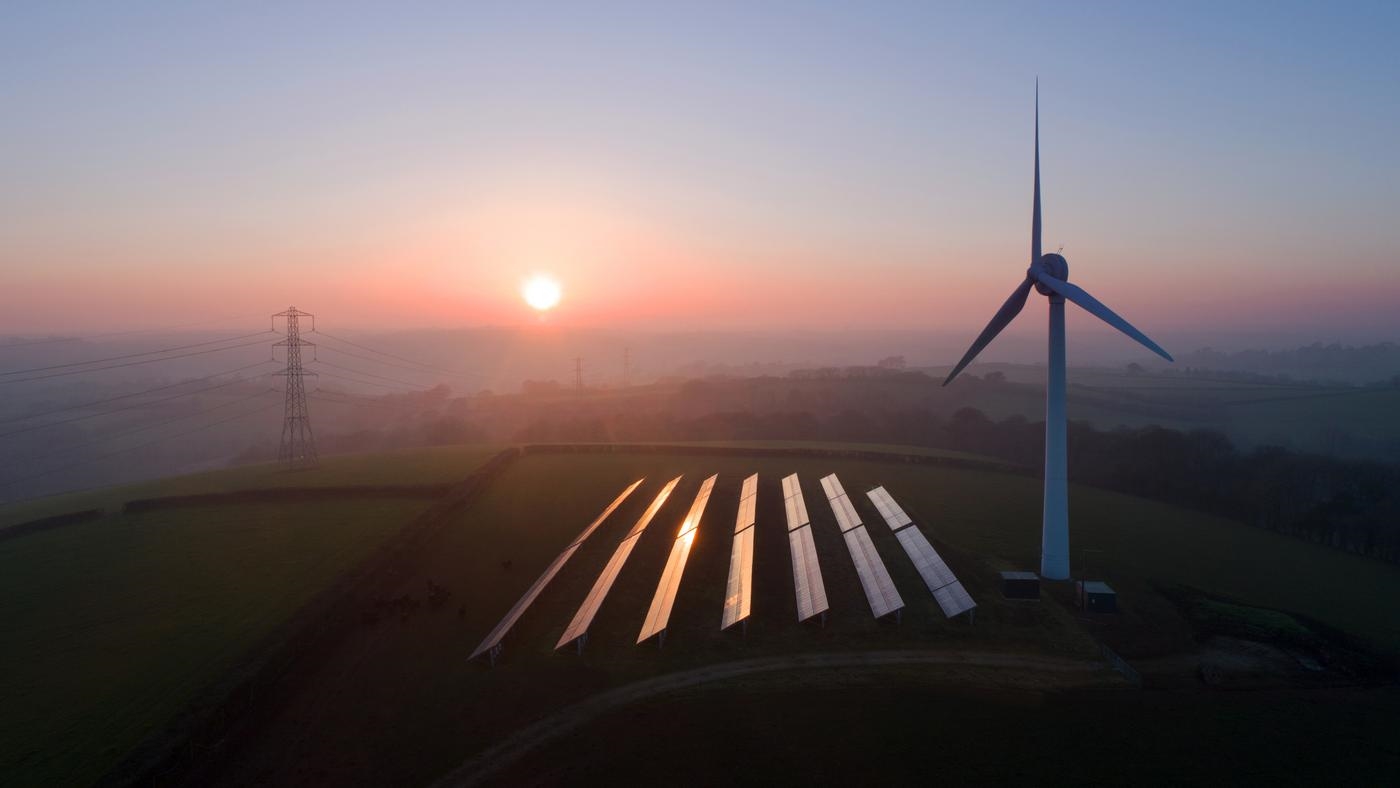5 things you need to know about carbon offsets in 2024
The carbon offset market holds potential for participants across carbon management strategies and as investments, but how are market dynamics evolving?
4 minute read
Nuomin Han
Principal Consultant, Head of Carbon Markets

Nuomin Han
Principal Consultant, Head of Carbon Markets
Nuomin provides clients with insights into emissions and climate-related development.
Latest articles by Nuomin
-
Opinion
4 key carbon policy developments for Q1 2025
-
Featured
Carbon markets 2025 outlook
-
The Edge
COP29 key takeaways
-
Opinion
Can CCUS momentum overcome headwinds to the industry?
-
Opinion
5 things you need to know about carbon offsets in 2024
-
Opinion
New rules and frameworks in global carbon policies
Fernanda Abarzúa
Senior Research Analyst, Carbon

Fernanda Abarzúa
Senior Research Analyst, Carbon
Fernanda’s primary focus lies in the offset market sector.
Latest articles by Fernanda
-
Opinion
5 things you need to know about carbon offsets in 2024
-
Opinion
2024’s carbon policy so far: four key takeaways
-
Opinion
Carbon offsets: key considerations for corporates
-
Featured
Carbon markets: 5 things to look for in 2024
-
Opinion
What could COP28 mean for Article 6?
-
The Edge
COP28 preview: five things to look for
Peter Albin
Senior Research Analyst, Carbon Markets

Peter Albin
Senior Research Analyst, Carbon Markets
Peter is part of the Carbon Research team which delivers intelligence, data and thought leadership pieces.
Latest articles by Peter
-
The Edge
COP29 key takeaways
-
Opinion
Video | Lens Carbon: Deep insight into carbon removal projects, costs, and more
-
Opinion
5 things you need to know about carbon offsets in 2024
-
Opinion
2024’s carbon policy so far: four key takeaways
Michelle Uriarte-Ruiz
Senior Research Analyst, Carbon Offsets Valuations

Michelle Uriarte-Ruiz
Senior Research Analyst, Carbon Offsets Valuations
Michelle is part of the carbon team, providing clients with insights and analysis of carbon offset projects.
Latest articles by Michelle
-
Opinion
5 things you need to know about carbon offsets in 2024
-
Opinion
2024’s carbon policy so far: four key takeaways
In recent years the use of carbon offsets to compensate for corporate carbon footprints has grown to become an important part of corporate carbon management strategies and or have entered the market expecting growth to continue. But how are market dynamics evolving, and how can firms realise value through carbon offsets as the energy transition progresses?
In a recent series of webinars, Wood Mackenzie’s carbon experts took a deep dive into the changing dynamics of the global carbon offset market. Read on for an overview of the discussion, and fill in the form at the top of the page to download the slide decks from the presentations.
Why does the carbon offset market exist?
Currently, compliance carbon prices applied through cap-and-trade systems or taxation only cover around a quarter of global emissions. The carbon offset market provides a mechanism for companies and individuals seeking to voluntarily compensate for their emissions or comply with regulations.
The market provides participants with various options, including purchasing issued credits from project developers, investing directly in carbon mitigation projects, or entering into offtake agreements for future offset delivery. Carbon offsets are digital certificates that can be traded between parties before a party ‘retires’ them, typically to compensate for emissions it has generated. After a period of substantial growth over the last decade, offset market supply and demand have both flatlined recently. However, going forward, we expect the market to start to grow steadily in strength in the near term before accelerating again.
What’s driving the value of carbon offsets?
There are four key areas in which firms are currently realising value from carbon offsets:
1. Cost control / efficiency:
- Meeting corporate decarbonisation targets while waiting for emissions reduction technologies to become a practical or economic option
Fulfilling the requirements of compliance regimes at least cost
2. Risk mitigation:
- Taking responsibility for ongoing emissions and securing a supply of offsets to address them
Staying ahead of rising stakeholder pressure to address their carbon footprint
3. Corporate responsibility:
- Demonstrating leadership on a critical global challenge, often by strategically aligning offset project finance with the business sector or model
Contributing to co-benefits such as those outlined by the UN’s Sustainable Development Goals
4. Financial benefits:
- Entering into purchase agreements or investments to realise future gains
- Ensuring that credit lines are unaffected by maintaining a clear climate strategy
What are the opportunities for corporates?
As well as addressing their own voluntary decarbonisation and compliance needs, firms can leverage carbon offsets to offer low-carbon products or help customers reduce their carbon footprint. Alternatively, they can sell, trade or use offsets as financial collateral.
It’s worth noting that offset prices can vary significantly across project types, depending on methodology, region, vintage, perceived quality and co-benefits. Download the slide decks for more on this.
What factors are impacting the offset market today?
Corporate offset retirement demand growth has slowed after retirement more than tripled between 2018 and 2021. Much of this can be attributed to increased scrutiny regarding the quality and integrity of projects and offsets, which a host of governance bodies and independent ratings agencies are working to address. Governments are also increasingly interested in how carbon markets can help them meet climate targets. And with Article 6.2 of the Paris Agreement operational, countries can exchange internationally transferred mitigation outcomes (ITMOs) and use them towards their nationally determined contributions (NDCs) – many such collaboration agreements have already been signed.
Carbon offset supply still exceeds demand, however, and ongoing media criticism creates reputational risk, while the potential for government intervention creates uncertainty for market participants. Meanwhile, Article 6.4 remains unagreed, hindering the development of an international carbon crediting mechanism. Debates around carbon avoidance versus removal, the value of additional registries, and the interplay of the voluntary market with Paris Agreement targets create additional uncertainty.
A final factor worth noting is the position of the Science Based Targets initiative (SBTi) on carbon offsets. The SBTi (a collaboration between the Carbon Disclosure Project, the United Nations Global Compact, the World Resources Institute and the World Wide Fund for Nature) is currently considering the use of carbon offsets to address Scope 3 indirect emissions. If the SBTi approves offsets for this purpose, the impact could outweigh all other factors, however, implementation will not begin before Q1 2026.
What key developments are expected and how will they affect investment decisions?
There have already been some notable carbon market developments in 2024. In Q1, a global consulting firm made the inaugural Carbon Integrity Claim with the Voluntary Carbon Markets Initiative (VCMI). This was followed in Q2 by the Integrity Council for the Voluntary Carbon Market (ICVCM) approving three registries and 7 methodologies under its benchmark Core Carbon Principles (CCPs), while the Gold Standard registry (GS) and the Verified Carbon Standard (Verra) independently published their first methodologies for carbon capture and storage.
Going forward, we expect projects involving engineered and nature-based removal, which currently account for only a small percentage of the market, to drive fresh demand. In contrast, avoidance projects that fail to demonstrate strong additionality will gradually exit the market. To minimise reputational risk, there will be a strong focus on the quality of projects rather than on quantity.
Don’t forget to fill out the form at the top of the page to download the slide decks from the presentations. As well as exploring the above themes in more detail, these discuss the question of mandatory carbon offsetting and set out how different regions are positioned in the global offset market.









